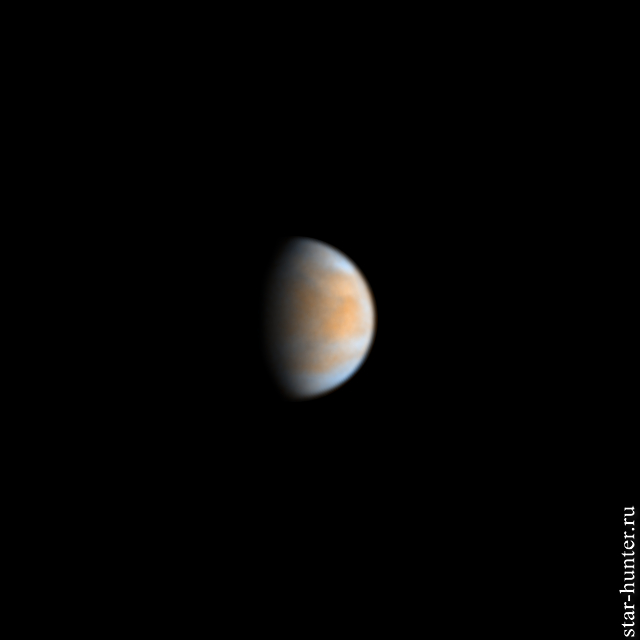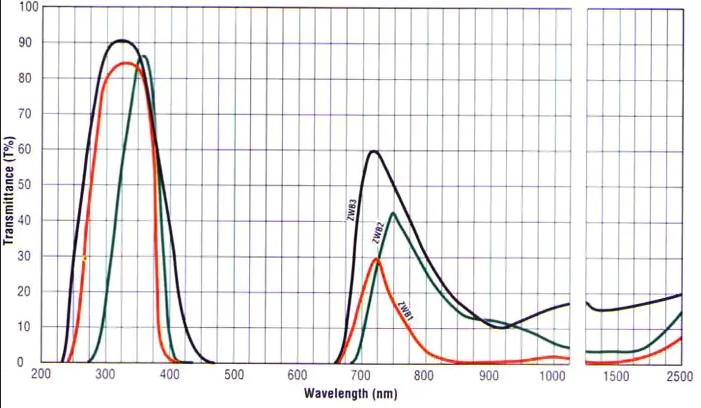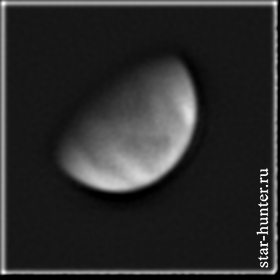Venus visibility conditions are getting better every day. The brightness of the planet is so high that under favorable conditions it can be found with the naked eye during the day. The angular size at the time of the capturing was 16.72 “, the angular distance from the Sun was 42 degrees. It is interesting that the distance from the Earth to Venus was exactly 1 astronomical unit (150,000,000 km).

Equipment:
-telescope Celestron NexStar 8 SE
-NPZ Barlow lens 2x cell
-ZWO ADC
-camera QHY5III178m
-filter Meade green CCD (red channel)
–ZWB2 + NPZ SZS-22 filter stack (blue channel)
Stacking 1500 frames with Autostakkert, wavelets with Registax 6.
Location: Russia, Anapa, backyard
Details of Venus’s cloud cover are best obtained when shooting with a light filter that transmits only ultraviolet light. There are special filters for shooting Venus (for example, Baader U-Venus), but they are very expensive. As a budget solution, I decided to use a bunch of ZWB2 filters with a diameter of 20.5 mm and a NPZ SZS-22 1.25″.
ZWB2 transmits ultraviolet radiation with a maximum at 365 nm. I bought it without a rim – an inexpensive 1.25″ filter perfectly fit as a housing. The disadvantage of the ZWB2 filter is that it also transmits infrared radiation, to which the camera is also sensitive. To reducing it, a second filter is used – the NPZ SZS-22.


For shooting in the UV range, use a monochrome camera. The optimal frame rate was about 40, the camera gain had to be raised almost to the limit. After adding frames and applying wavelets, you get something like this:

Surprisingly, the details of the cloud cover can be captured not only in the ultraviolet, but also in the visible range. When shooting with the Meade green CCD green filter, I also managed to isolate Venus clouds. Of course, they are not as contrasted as in the UV range.

Initially, I wanted to synthesize a color image based on IR850 nm (R) filters, Meade green CCD (G), ZWB2 + SZS-22 (B) filters, but I didn’t like the result. So I decided to try the G (G + UV) UV scheme. Of course, the colors are false – visually, the planet is not visible in the eyepiece of the telescope.
Next time I’ll try to shoot Venus with RGB filters and with UV-pass filter.